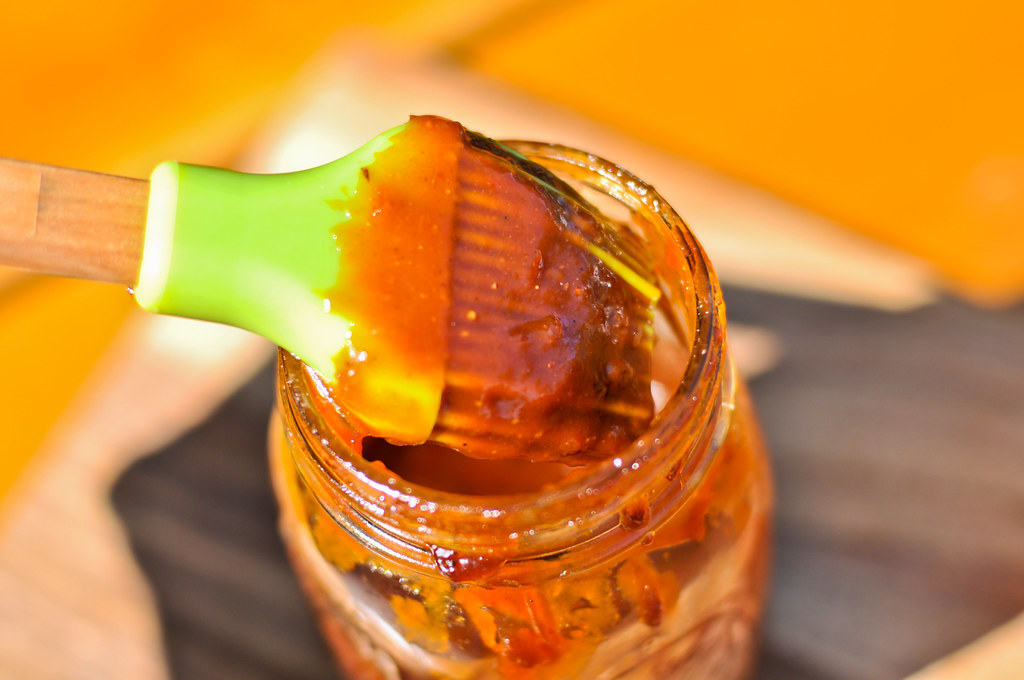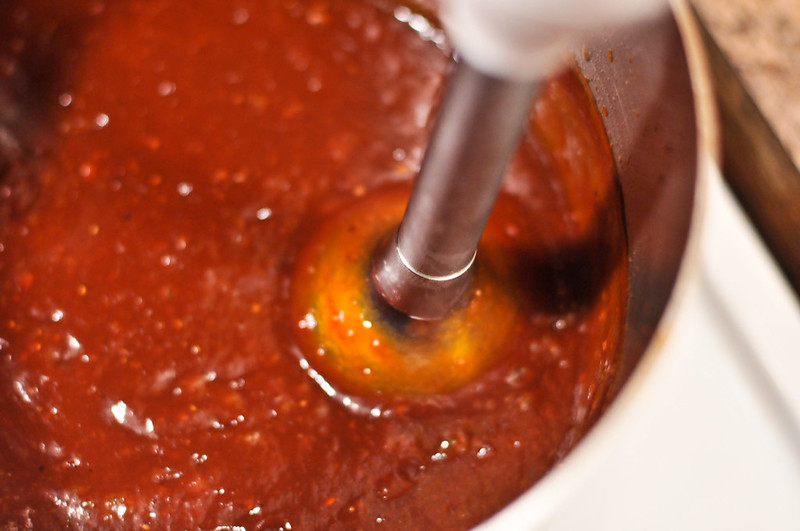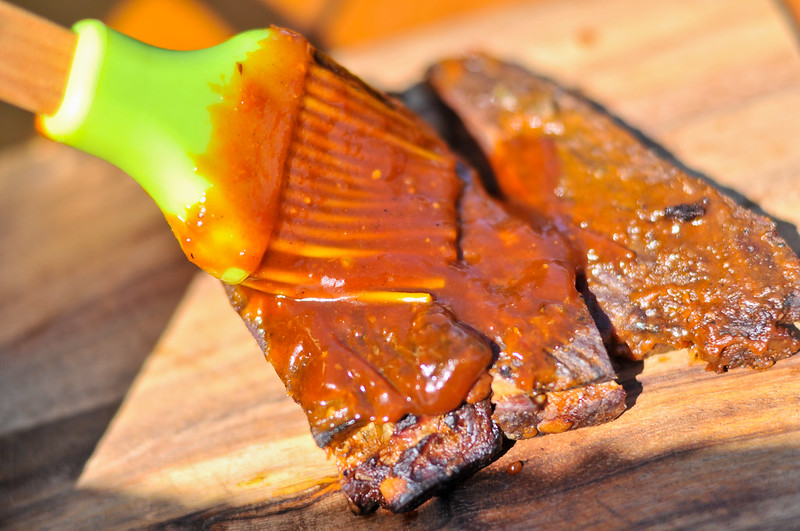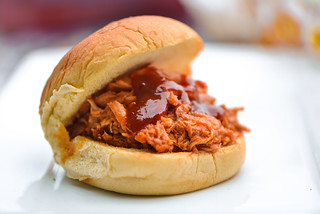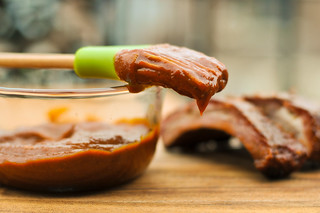Hoisin Barbecue Sauce
Last winter I spent a hell of a lot of time developing two barbecue sauces that I can call my own. My first, a cherry-chipotle sauce, has a fruity and earthy flavor with a nice kick of heat that seems to be a favorite of everyone who tries it. The second, a sweet and spicy sauce, has gone on to proudly adorn 1st place chicken wings and 4th place ribs, along with a few other well received entries in competitions last summer. So now that I'm pretty much done tweaking those two, I want throw a couple more into the mix this winter while I have the time to mess around in the kitchen. My first inclination was an Asian inspired sauce, and nothing says Asian barbecue sauce like hoisin—a thick, sweet and salty sauce built on a fermented bean paste base.
I've come to a formulaic method of my sauce creation. While I think each sauce needs to be made of distinct ingredients of varying amounts to build an ideal flavor profile, I've still used the same procedure to get from start to end. So far, this has always began with sauteing onions. Onion is a pretty ubiquitous flavor for barbecue sauce, and while onion powder might serve you fine, lightly browning real onions really enhances the flavor, giving both a sweetness and a slight oniony bite.
Once onions and any other veggies are browned, I then throw in all the liquids and spices. For this sauce, hoisin did most of the heavy lifting with its already complex sweet and salty flavor, and since it is already kind of a barbecue sauce—being found in almost anything labeled "barbecue" in a Chinese restaurant—I only needed to mix in a few American standards to bridge this cultural gap. Those included ketchup, vinegar, and honey. I then added some complementary ingredients like sherry, soy sauce, Sriracha, szechuan peppercorns, and five-spice powder to give additional Asian notes to the finished sauce.
The whole thing was simmered for about half an hour. This is another step I particularly like. I've made some might fine no-cook sauces, but I find when you make the sauce a little on the watery side and let it boil down to thicken, you get an intensity of flavor that's hard to match.
The final product was an incredibly full-flavored sauce, with hoisin dominating, but the ubiquitous sweet and tangy tomato barbecue elements all still present. The other spices added a layer of complexity that lent a unique heat that I doubt you'll find in anything off the shelf. I happily slathered this sauce liberally over two slabs of cherry-smoked ribs, but that's a story for next week...
You Might Also Like
Comments
-
Marc Are those first two sauces you mentioned Meatwave family secrets, or have you shared those recipes somewhere?
-
Josh @Marc Those are staying secrets for now, but the cherry-chipotle was built off of this recipe.
-
Marc Thanks!
-
Tom What brand of Hoisin do you like? When I look at the typical supermarket varieties, they're mostly crap, with HFCS the first ingredient; some even without any sign of bean. Help?
-
Josh @Tom I tend to get the Lee Kum Kee. It's the most prolific in the Asian markets here. I can't say I've had a hoisin that's been bad though, HFCS or not, they all seem to taste good and fairly similar.
-
Tom Thanks, Josh. I'll give it a try. Love your site. Keep up the great work!
-
Chris Loving the idea of this sauce. I'm trying out a bunch this summer and this one is going on my list.
-
Liz Is this your recipe on serious eats? It’s identical! https://www.seriouseats.com/hoisin-barbecue-sauce-recipe
Yours has been around a lot longer so just curious if you’re working with those guys. I can’t wait to try it out. Sounds like a solid flavour combo. -
Josh @Liz That's my recipe. SE periodically makes updates to their posts and the date of the article updates when they do that. I'm not currently working with SE—I stopped writing for them regularly in 2015 and just did a handful of sponsorship articles since then, but really nothing in last 5 years or so.
